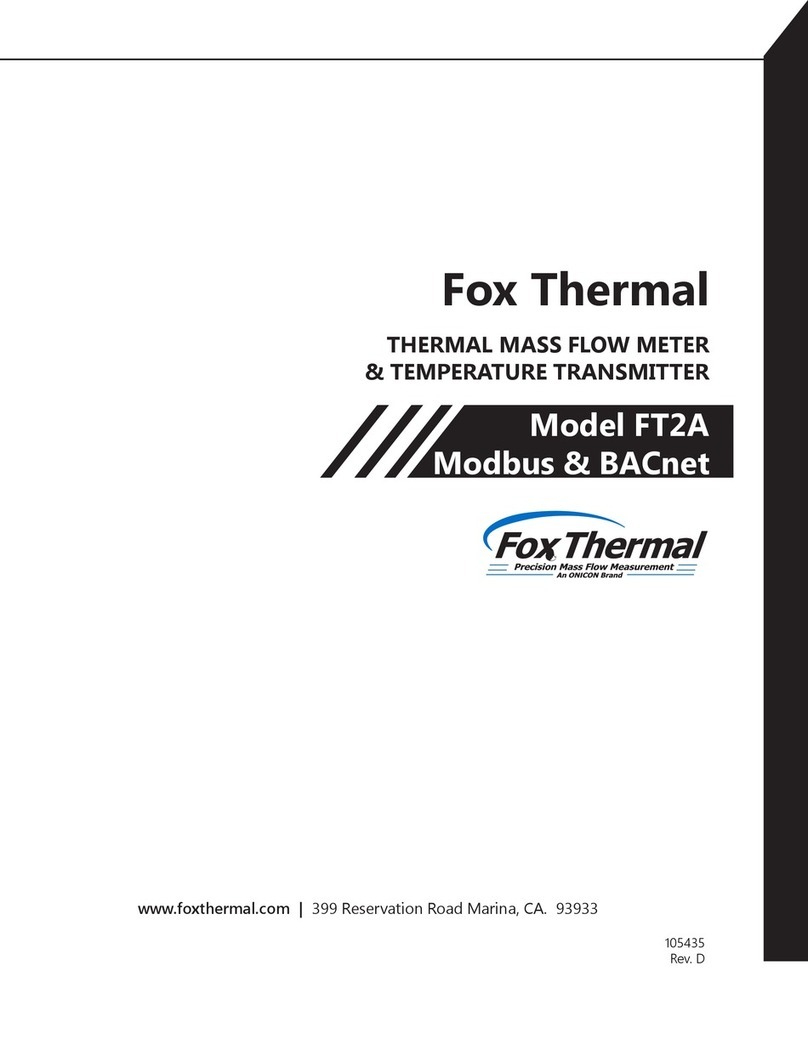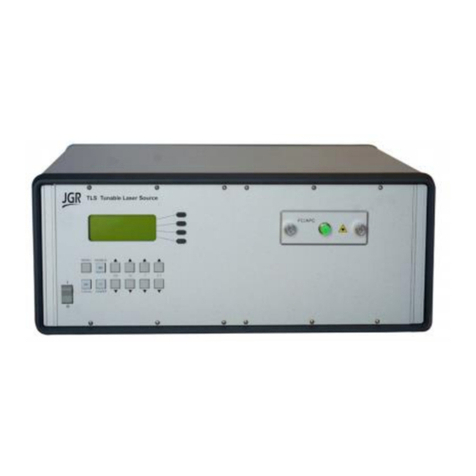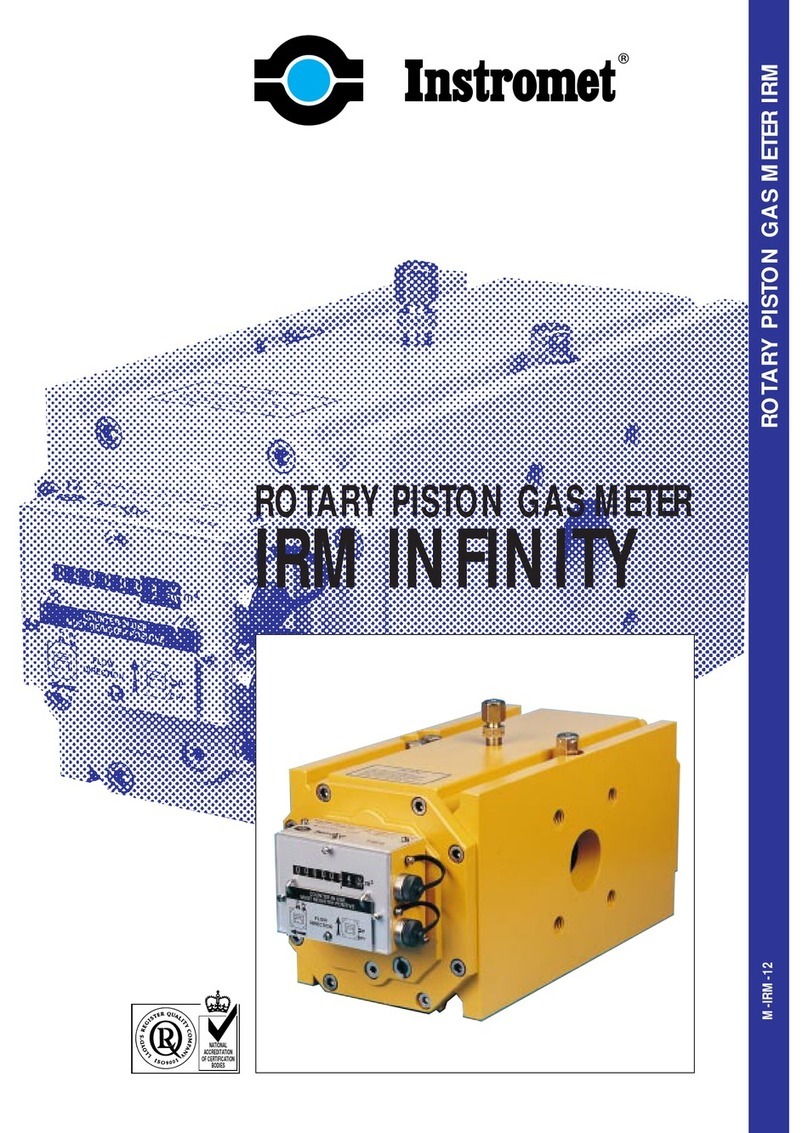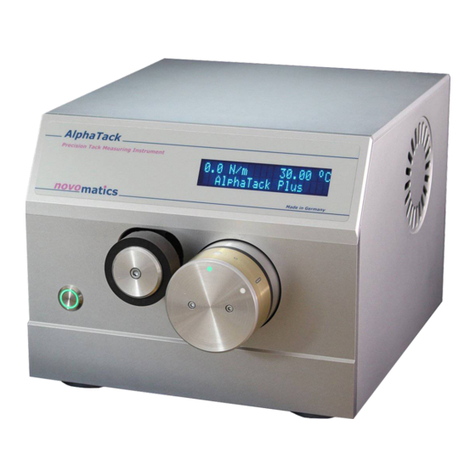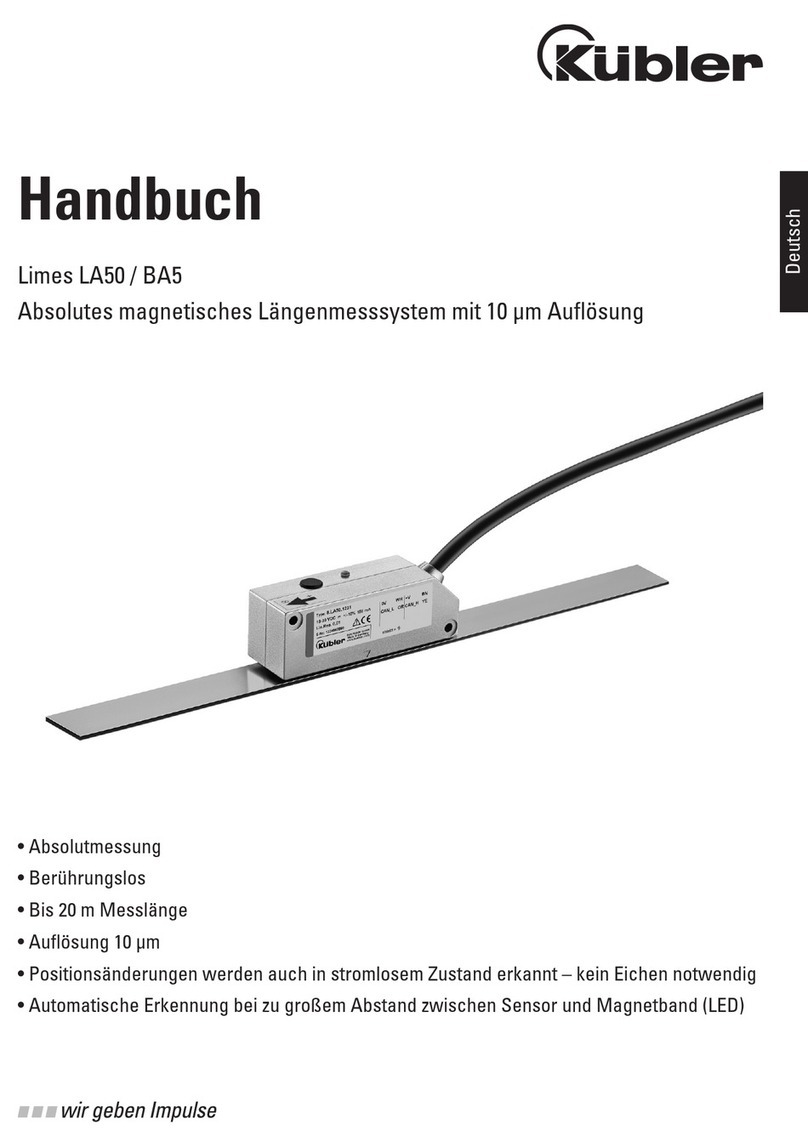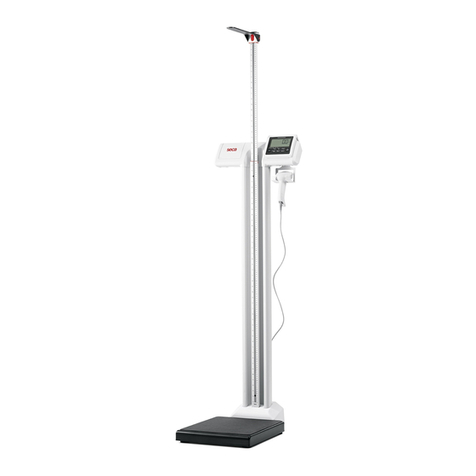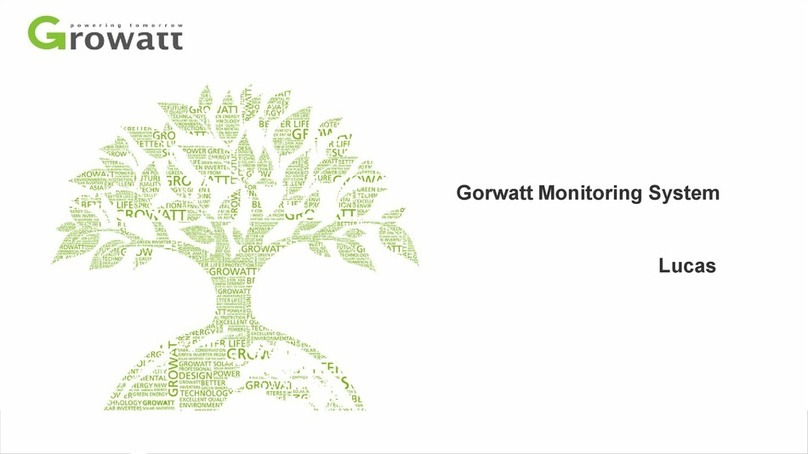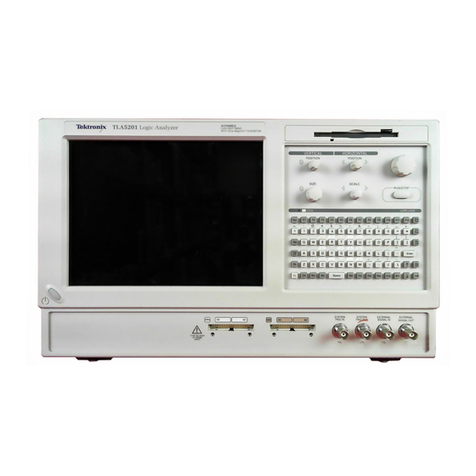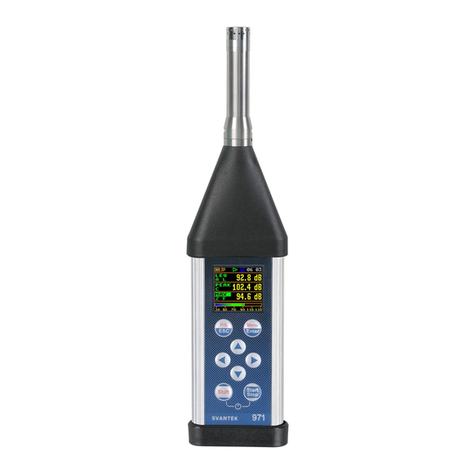Hitech G1010 Series User manual

130-0047 Issue 8
G1010 OEM
Oxygen Analyser
Instruction Manual
This manual contains important Health & Safety information
SAFETY and EMC INFORMATION
Please read this section carefully before installing the instrument.
This instrument meets the requirements of the European directives specified below. However it is the responsibility of
the installer to ensure the safety and EMC compliance of any particular installation
Equipment: The G1010 range of gas analysers.
Safety: These instruments comply with the European Low Voltage Directive 73/23/EEC, amended by 93/68/EEC by
the application of the safety standard EN61010(93)
Installation and servicing should only be carried out by suitably qualified personnel.
Electromagnetic Compatibility: These instruments comply with the EMC directive 89/336/EMC amended by
93/68/EEC, by the application of the following standards:
EN50081 Part1: 1993 (Generic Emission Standard)
EN50082 Part1: 1995 (Generic Immunity Standard)
Installation Requirements for EMC: To ensure compliance with the European EMC directive certain installation
precautions are necessary as follows:
Instrument Rear Panel Rating
The G1010 instrument is designed as a panel mounted instrument and for this reason the back panel is rated as service
only. All service personnel should take electrostatic precautions before work is carried out at the rear of the instrument.
Radiated Emissions
In light industrial/domestic applications it may be necessary to suppress emissions from the power cable by fitting a
ferrite choke to the mains supply lead. The mains cable should be wound twice through the choke. (This choke is
available on request by quoting: Part No: 418-0045).
Routing of wires
To minimise the pick-up of electrical noise all signal wiring should be shielded and routed away from power cables.

130-0047 Issue 8
G1010OEM OXYGEN ANALYSER
HANDBOOK.
1.0 GENERAL DESCRIPTION
The G1010 is a microprocessor controlled oxygen analyser which
provides a performance and a range of features without parallel for
an analyser of this type and cost.
IMPORTANT NEW SENSOR IDENTIFICATION
In order to make sensor ordering easier we have renamed
our galvanic sensors used in these instruments into 3
groups:
N type - (formally C/S & C/N)
L type - (formally LL or C/NLL)
This handbook reflects these changes; if you have any
queries concerning sensor configuration, then please
contact us with the instrument serial number, and we will be
pleased to assist.
Page 1 of 18
2.0 SPECIFICATION
Display
Multi digit LCD - character height 12.7mm
Display ranges
1) % version (N type sensor) - Display range 0 to 55%. Resolution:
0.1% from 10% to 25%; 0.01% below 10%
2) ppm version (L type sensor) - Display range 0ppm to 5%
Stability
Better than 2% of full-scale per month
Sensor life
Up to 18 months
Sample flow
Between 100 and 300 ml/min for optimum operation. Max. 1 l/min
Sample pressure
The pressure applied to the sensor is determined by the vent
pressure which should be atmospheric for quoted accuracy.
Note: The sensor must not be subjected to rapid pressure changes.
Sample temperature
-5 to +40 °C (non condensing)
Sample connections
Inlet and outlet: captive seal compression fittings suitable for 0.25
inch (or 6mm) o/d tube
Page 2 of 18

130-0047 Issue 8
Speed of response
T90 - variable depending on sensor and concentration.
Approximately 3s at % levels and 20s at ppm levels. The ppm
figure assumes that the sensor is purged down.
Analogue outputs
0 to 5 volts (min. load 10kΩ) standard, 4 to 20mA (max. load 300Ω)
option.
% version ≡0 to 5% (fixed)
PPM version user programmable to be ≡0/200ppm or 0/2000ppm
Alarm output
One user programmable for:
Mode - HIGH, LOW or OFF
Level - Over 0/25% for % version and 0/2000ppm for ppm version
Hysteresis - 0% to 10% of set point.
Volt free C/O contacts rated at 48v ac or dc, 0.5A, normally
energised.
Ambient temperature
0 to 40 °C - continuous
-5 to + 50 °C - intermittent
Power supply
110/120 v or 220/240 v 50/60 Hz, 24v DC, ±10% including ripple
and noise. Max power consumption 6VA
Mounting
Panel-mounting with two clamps
Materials
Glassfibre-reinforced Noryl to IP40 (IP54 front-panel option)
Dimensions
See Figures 1 and 5
This instrument has been designed to meet the requirements of the
EMC Directive 89/336/EEC and the requirements of the Low
Voltage Directive 73/23/EEC when installed in accordance with
these instructions.
Page 3 of 18
3.0 INSTALLATION
3.1 Unpacking and visual checking
Take all standard precautions when opening packages. In
particular avoid the use of long bladed cutters. Search packing
before discarding it and make sure that all of the components are
removed. Check that all pipe connections have captive seal nuts.
3.2 Mounting Chose a site
where the ambient
temperature is
between 0°C and
40° C. and where
the analyser will
not be subjected
to vibration,
knocks or jolts. It
may be tilted etc.
in any attitude.
To install the
electronic
control/display
unit, remove the
screw side-clips (if
fitted) and slide
the unit into the
panel cut-out. Re-
fit the two clips
and tighten them
up. Dimensional
details are given in
Fig. 1
3.3 Power supply
The standard
options are 240V
AC, or 110V AC or
24V DC. Refer to the serial number plate located on the side of the
instrument for details.

130-0047 Issue 8
Page 4 of 18
3.4 Connections
The sensor, output signals and the supply should be connected as
shown below. See section 3.8 for details of optional remote sensor
version.
Terminal 1 Sensor +ve (red wire)
" 2 Sensor -ve (black wire)
" 3 Analogue Output +ve
" 4 " " -ve
" 5 Alarm 1 common terminal
" 6 " " N/C terminal
" 7 " " N/O terminal
" 8 Not used
" 9 " "
" 10 " "
" 11 Mains Live (or DC +ve )
" 12 Mains Neutral (or DC -ve)
" 13 Mains Earth
N/C= Normally closed N/O= Normally open
Note: 1) Terminal 1 is at the left-hand end of the connector when
viewed from the rear. 2)"Normal" refers to the alarm status, not the
electrical rest position of the relay.
3.5 Sample connections
The standard sample connections are shown in Fig. 2. It is
important that the sample being supplied to the analyser is clean
and non-corrosive. Filters or chemical absorbers will be necessary
for those samples that contain particulate matter or corrosive
components. Additionally the dew-point of the sample should not be
above the ambient temperature.
If site or process conditions require that the process is isolated from
the analyser when the sensor is changed then shut-off valves
should be fitted to the inlet and outlet of the measuring sensor. The
inclusion of a three way valve on the inlet side can also be used to
allow easy connection of a standard gas for calibration checks. It is
particularly important that good pipework connections are made
when low levels of oxygen are being measured.
Page 5 of 18
For all parts per million (ppm) measurements the pipework
should be all metal or hard plastic (Nylon, un-plasticised P.V.C.
etc.) up to the inlet of the measuring sensor. Flowmeters and
pumps must be suitable for handling ppm levels if placed on
the inlet to the sensor; see comments on Fig. 2. Note that the
sensor is shipped with its inlet tube plugged. Do not remove
this plug until you are ready to fit the sensor to the instrument.
Fig. 2
General sampling system arrangement
Sample outlet
Optional
pump
position
Flow meter The flow meter and pump can be placed on the inlet if it is more
convenient and both are adequately leak tight etc. for use at the
concentration of oxygen being measured. If either or both are not
suitable they should be put in the sample outlet pipework. To reduce
the effect of any back diffusion, a vent pipe must be connected
to the sample outlet in all cases and this must be at least 300mm
long if nothing else is fitted to the outlet.
Sample inlet
Calibration gas
inlet
Pipework and fittings shown
dotted are optional
Sample
Pump
Filter
Sample Flow
ML/MIN
250
200
150
100
50
Flow
control
valve
Sample outlet
and inlet
suitable for ¼"
or 6mm
diameter tube
Sensor
1
+
Cell
5
C
Alarm 1
C
Alarm 2
93
+
An.O/P
7
NO NO
11
L
Danger
Mains
13
E
2
-
6
NC NC
104
-
812
N

130-0047 Issue 8
This is particularly important for instruments fitted with L
sensors, irrespective of the positioning of flow meters etc.
Page 6 of 18
It is important to fit a pipe of at least 300mm length to the
sample vent/outlet connection to prevent back diffusion of air.
It should be noted that back diffusion can occur even when the
sample is flowing, and is due to the difference in oxygen partial
pressure between the sample and air. The pipe should be
short enough and of sufficient bore to prevent significant back
pressure when the sample is flowing. Standard 6mm or ¼"
tubing is ideal.
The sensor must not be pressurised beyond 0.25BAR gauge or less
than (-)250mm water gauge. Rapid pressure changes could
damage the sensor, and pulsation will give an erratic display.
3.6 Sensor installation
The sensors are shipped with the leads shorted and the sample
tube plugged with a rubber bung. This ensures that a sensor is
purged down to low levels and ready to be applied to the
measurement of low levels of oxygen (less than 1000ppm) with the
minimum of delay. The bung should be left in place until the system
is ready for the sensor to be fitted. If it is intended to apply the
sensor immediately to the measurement of low oxygen
concentrations then the sample should be left flowing during the
sensor change operation. The bung should be removed from the
sensor and the sensor coupled to the holder as rapidly as
possible. THIS ASSUMES THAT THE SAMPLE THAT WILL
INEVITABLY ESCAPE WILL NOT CONSTITUTE ANY SORT OF
HAZARD. IT IS THE RESPONSIBILITY OF THE USER TO
ENSURE THIS.
To fit the sensor, first slacken the compression nut on the sensor
sample tube. Remove the rubber bung from the inlet tube, and put
the inlet tube into the compression fitting. Tighten the compression
nut - do not over tighten, ½ to ¾ of a turn beyond finger tightness
is adequate. Finally connect the sensor signal leads to the terminal
block - see Fig. 2 and section 3.4 for details.
Page 7 of 18
WARNING - Do not leave an L sensor exposed to oxygen
concentrations above 5% connected to the instrument for extended
periods as this will cause premature depletion of the sensor.
Instead, leave the sensor disconnected or apply a sample of low
oxygen concentration. This applies whether the instrument is on or
off. When fitting a sensor intended for immediate use at
concentrations of 1000ppm or less it is advisable to:
A) have low level gas flowing through the system prior to fitting the
sensor.
B) unseal and fit the sensor as fast as possible.
3.7 Alarm contacts
The contacts are rated for signal applications. Where AC voltages
are to be switched, the use of suitable snubbers across the contacts
is recommended to ensure reasonable contact life. Typical values
are 0.047µF to 0.22µF with 47 ohms to 100 ohms in series with the
capacitors. N.B. Mains rated capacitors must be used.

130-0047 Issue 8
Page 8 of 18

130-0047 Issue 8
4.0 COMMISSIONING
4.1 Switching on
When the analyser is fully connected, it may be switched on. When
switched on, the analyser automatically enters normal measurement
mode. Depending on which sensor is fitted, the analyser may
initially indicate a high oxygen reading. After a few minutes the
reading will settle to a level dependent on the sample being supplied
to the sensor. The analyser is calibrated prior to shipment and may
be used immediately. To check calibration see section 5.
4.2 Programming
The user programmable features are accessed by pressing and
holding the Edit button for approximately 8 seconds when the
instrument is in normal measurement mode. Each subsequent
momentary press of the Edit button scrolls the display through a
sequence of adjustable parameters. The order of the sequence is
as follows:
% version
Alarm Set point →Alarm Mode →Alarm Hysteresis →Return to
measurement mode.
PPM version
Alarm Set point →Alarm Mode →Alarm Hysteresis →Analogue
Output top scale value →Return to measurement mode.
ALARM - Set point
This is the first parameter to be displayed when the Edit button is
pressed and held for eight seconds. The display will show “E xxxx”,
and the Alarm LED will flash. “xxxx” is the value of the alarm set
point and the flashing LED indicates that it is the alarm set point. To
the right of the display a % or ppm symbol is displayed to indicate
the units of the value displayed. To change the value of the set
point, press the up/down arrows until the display shows the required
value. Observe the “%” and “ppm” symbols to ensure the correct
setting. When the buttons are first pressed, the value changes
slowly and the least significant number can be changed by
Page 9 of 18
giving the buttons a short “click”. If the button is kept depressed the
rate accelerates rapidly to enable large changes in value to be
achieved quickly. Once the required value is displayed, press the
Edit button once to store the value in the analyser’s memory.
Simultaneously the display will change to show “E x” and the
Alarm LED will continue to flash.
ALARM - Mode
The symbol displayed in the “x” position indicates the mode of the
alarm as follows;
0 - Alarm off; H - High; L - Low. Press the arrow buttons to change
the mode and press the Edit button once to store the setting. The
display will change to show “EH xx” and the Alarm 1 LED will
continue to flash.
ALARM - Hysteresis
The number displayed In the “xx” position indicates the value of the
hysteresis for alarm 1. The value is given in percentage of the set-
point or alarm level and is variable from zero to 10%. Press the
arrow buttons to set the required value and then Edit button to
store the value. The display will then change to repeat the above
sequence for alarm 2; indicated by the alarm 2 LED flashing.
ANALOGUE OUTPUT - Top scale value (PPM version only)
When the EDIT button is pressed following alarm hysteresis entry,
the display will show “EPxxxx”, where “xxxx” is the oxygen
concentration at which the analogue output ( 0 to 5v or 4 to 20mA)
is at top scale. The alarm LED does not flash. Press the up/down
arrow keys to scroll the display through the pre-set values of
200ppm and 2000ppm. Once the required value is selected, press
the Edit button to store the value and return to measurement
mode.
4.3 Applying the sample
Establish a sample flow of between 100 and 300ml/min. The
analyser will respond immediately and move towards displaying the
concentration of oxygen in the sample. The speed of response
Page 10 of 18

130-0047 Issue 8
varies according to how far the oxygen concentration in the sample
is from the gas in contact with the sensor at start up (usually air).
Figs 4 & 5 show the typical response time from an air condition for
N and L type sensors. Once the sensor is purged down, it
responds in a few seconds to large changes of oxygen
concentration within the instrument's span. Short time excursions to
high levels of oxygen, such as may be experienced during
calibration, are recovered from in a matter of a few minutes.
4.4 Sensor failure detection
All types of sensor used on the G1010 fail to a low output or
concentration reading.
Page 11 of 18
5.0 MAINTENANCE AND CALIBRATION
CHECKS
CAUTION: VARIOUS PROCEDURES ASSOCIATED WITH
MAINTENANCE AND CALIBRATION AFFECT THE OUTPUTS OF
THE ANALYSER. ANY OF THESE OUTPUTS THAT ARE BEING

130-0047 Issue 8
USED FOR CONTROL, OR THE ASSOCIATED CONTROL LOOP
SHOULD BE DISABLED BEFORE COMMENCING.
5.1 Sensor life
The N sensors have a life of 100,000 oxygen % hours or 18 months
- whichever is the sooner; and the L type a life of 16,000 oxygen %
hours or 18 months whichever is the sooner. Each sensor is date
labelled (see the Storage of the Measuring Sensor section 6.2 for
the code) when supplied. This date should be used to establish the
expiry date.
5.1.1 Sensor failure modes
All known sensor failure modes result in a loss or lowering of output.
Thus applications that look for oxygen depletion are automatically
fail safe and vice-versa.
5.2 Calibration interval
It is recommended that the calibration is verified every month. This
frequency of verification is for typical industrial applications. When
the application is critical, the frequency of verification should be
increased in line with local safety standards.
5.3 Calibration gas level
The level of oxygen in the calibration gas depends on the particular
model and in particular the type of sensor fitted. In general, for
optimum accuracy, it best to calibrate with a gas with the same
composition and oxygen concentration as the normal sample. If you
calibrate on air, the response time for the sensor to stabilise back to
its normal working level after being exposed to air should be taken
into account.
Moreover if an air calibration is performed, it should be borne in
mind that most air taken from the atmosphere is moist. The normal
figure of 20.95% for the oxygen content of air is for dry air. Ambient
air contains nearer 20.7% because of dilution effect of the
Page 12 of 18
moisture. It is this figure that should be used when calibrating in this
way.
5.4 Calibration of a percent range instrument.
(See section 5.5 for instruments scaled in PPM)
5.4.1 Piping
The piping carrying the calibration gas must not have any leaks, and
should have an outlet pipe at least 300mm long to reduce any effect
of back diffusion. The flow rate of the gas must be controlled and
should be the same as the flow rate of the sample from the process.
Also, the pressure at the sample outlet must be the same as that
when the analyser is measuring the sample. This avoids any errors
due to the pressure at the sensor. Refer to Fig 2 for details of a
typical installation.
5.4.2 Calibration method
Minutes
Response of an N type sensor from an air saturated
condition when zero grade nitrogen is applied.
Fig. 4
10
23
Hours
PPMOxygen
456789101112
20
30
40
50
60
70
80
90
100
110
120
130
140
150
160
170
Fig. 5
Response of an L type sensor from an air saturated
condition when zero grade nitrogen is applied

130-0047 Issue 8
Isolate the analyser from the process gas and pass the calibration
gas through it. A full calibration requires two calibration points
referred to as upper and lower, although the lower point can be
omitted except when replacing a sensor. Safeguards are built into
the instrument to prevent the calibration being set outside of the
sensor’s operational limits.
It should be noted that it will take time for the calibration gas to flush
the previous gas out of any filters etc. upstream of the analyser.
This means that the reading will take time to stabilise. Refer to the
response graphs (Fig. 5) for guidance on this. When the reading is
stable, press and hold the Calibrate button for approximately 8
seconds. The display will go blank for a moment and then show “H
xxxx”; where H indicates that the high calibration point is selected.
Use the up/down arrow buttons to set the reading to that of the
calibration gas, and then press the Edit button momentarily to reset
the calibration. The display will now show “H xxxx”, where xxxx is
the correct concentration of the test gas. Unless a low level
calibration is required, normally done only when a new sensor is
fitted, press the Calibrate button momentarily to return to
measurement mode. To access the low calibration mode, press
and hold the Calibrate button for 8 seconds. The display will now
show “Lxxxx” where “L” indicates that the low
Page 13 of 18
calibration point is selected and “XXXX” is the measured value of
the calibration gas. Lower point calibration is performed in the
same way as the high calibration, however it may be necessary to
allow a longer time for the reading to stabilise.
5.5 Calibration of a ppm range instrument
Piping
See section 3.5 for advice on pipe work etc. If there are regulators
in the gas stream they should have a low volume and a metal
diaphragm. Most pressure gauges etc. contain cavities that entrain
air/oxygen and can take several hours to purge down. For this
reason they should be avoided.
Calibration gas level for L sensors
Ideally the calibration gas level should be as near to the normal
working concentration as possible. However it is possible to use
concentrations up to 5% oxygen in nitrogen. Beyond 5% the sensor
begins to deviate from its standard output equation. N.B. Air may
be used for convenience if nothing else is available. In this
case, to correct for the deviation from the standard equation,
the reading should be set to read 19.4% - NOT 20.9%.
Calibration method
Isolate the analyser from the process gas and pass the calibration
gas through it. It should be noted that it will take time for the
calibration gas to flush the previous gas out of any filters etc.
upstream of the analyser, which will increase the time taken to
stabilise.
WARNING: Care must be taken not to expose a L type sensor to
ambient air for more than a few minutes while changing pipes etc.
The time taken to purge the sensor down to low ppm levels
depends on how much oxygen the sensor has absorbed. If the
sensor has only been exposed briefly to air, the purge time will be
quite short. If, however, the sensor has been exposed to air for
several hours, the purge time may become far longer. See Fig. 5.
Page 14 of 18
5.6 Sensor replacement - overview
Before proceeding identify which sensor is to be replaced, then read
and fully understand the following appropriate procedure.
For best accuracy it is necessary to re-calibrate the instrument
following a sensor change. The calibration procedure depends on
the type of sensor fitted to the instrument. See sections 5.3 to 5.5
for additional information on calibration before proceeding.
Each instrument is built to accept a particular type of sensor and for
the most part cannot be used with one of a different type.
For instruments fitted with L type sensors it is necessary to reset
the sensor zero offset before replacing the sensor as detailed in the
following sections. For instruments fitted with N sensors proceed to
section 5.7.

130-0047 Issue 8
5.6.1 Setting zero offset on instruments fitted with an L sensor
The label on the L sensor is marked with the sensor’s offset at zero
oxygen concentration. The offset figure is given in units of parts per
million (PPM) oxygen and is negative; for example (-)3.5PPM. To
set the zero offset proceed as follows:
a) Disconnect the signal leads of the old sensor from terminals 1
and 2 of the instrument’s terminal block and leave the input open
circuit, i.e. with nothing connected to terminals 1 and 2.
b) Apply power to the instrument if it has been disconnected, and
allow 2 minutes, or until the reading is steady, for the electronics to
stabilise.
c) Press the Calibrate button for approximately 8 seconds until the
display shows “H xxxx” . Release the button and then press it for
another 8 seconds approximately until the display shows “L xxxx”.
“L” indicates that the lower concentration calibration is selected and
xxxx is an oxygen concentration figure; note it probably will have a
negative sign in front of it. Next use the up/down arrow buttons to
set the display to read the sensor oxygen concentration offset figure
Page 15 of 18
given on the new sensor - note that this a negative figure and it is
important that the display is set accordingly. When the correct
figure has been set on the display, press the Edit button once for
approximately 2 seconds and release. This puts the figure into the
instrument’s memory and the “L” will disappear and instrument will
return to ordinary measurement mode. Refer to section 5.7 for
details of how to replace and connect the sensor.
5.7 Replacing/Connecting the sensor
Read section 5.6 before proceeding
Before replacing/connecting a sensor please note:
a) SOME OF THESE PROCESSES ASSUME THAT THE
SAMPLE WILL NOT CONSTITUTE ANY SORT OF HAZARD,
ASPHYXIATION ETC., IF IT ESCAPES INTO THE
ATMOSPHERE. IT IS THE RESPONSIBILITY OF THE USER
TO ENSURE THIS. IF A HAZARD WILL RESULT THEN THE
METHOD SHOULD BE MODIFIED ACCORDINGLY.
CONSULT HITECH OR THEIR REPRESENTATIVES FOR
ADVICE IF IN DOUBT.
b) That any control loop using the outputs from the unit is
disabled.
5.7.1 General points when replacing a sensor
Disconnect the old sensor’s signal leads from terminals 1 and 2 of
the connector on the rear of the instrument. Slacken the
compression nut on the sensor sample tube and withdraw the old
sensor. See warning 5.7 a). Replacement is the reverse of
removal; refer to the following instructions for details of each type of
sensor. The instrument does not have to be turned off during this
operation, although care should be taken to ensure that any control
equipment that is attached is disabled.
5.7.2 Replacing and connecting N and L sensors - N and L
sensors are shipped with the leads shorted and the sample tube
plugged with a rubber bung. This ensures that the sensor is purged
down to low levels and ready to be applied to the measurement of
low levels of oxygen (less than 1000ppm) with the minimum of
delay. The bung should be left in place until the system is ready
Page 16 of 18
for the sensor to be fitted. If the sensor is to be immediately applied
to the measurement of low oxygen concentrations, the sample
should be left flowing during the sensor change operation. The
bung should be removed from the sensor and the sensor
coupled to the holder as quickly as possible.
5.8 Gas calibration following replacement
Refer to sections 5.3 to 5.5 for method of calibrating the sensor at
higher levels (span).
5.9 Safety and Disposal of old sensors
The sensors contain a 4-molar potassium acetate solution which is
corrosive. Normally this solution only leaks out as a result of
mechanical damage (crushing or piercing) or by electrical misuse;
e.g. by attempting to input an electrical charge. The sensors also
contain small amounts of lead, lead oxide, platinum, silver, carbon

130-0047 Issue 8
and antimony, some of which are toxic and/or mutagenic. If the
contents of the sensors come into contact with the skin or other
parts of the body, the affected area should be washed with copious
amounts of water and medical advice sought.
As the sensors contain some toxic compounds, they must be
disposed of according to local waste management requirements
and environmental legislation, irrespective of their physical
condition. They must not be burnt as they will evolve toxic fumes.
Page 17 of 18
6.0 SPARES AND REPAIRS
6.1 Ordering parts
The replacement sensor is the only user serviceable part.
All other parts are designed for a MTBF of 100,000 hours.
Should any failure occur, the instrument should be returned
to Hitech Instruments Ltd or their local representative for
repair. When ordering spare sensors or raising queries on
the instrument, it is important that the serial number or job
number, is quoted. These numbers are found on the data
label on the right-hand side of the instrument.
6.2 Storage of measuring sensor
The oxygen sensors type N and L have a maximum storage
life of 6 months if the full usable life is to be realised. Each
sensor is dated in manufacture and "storage" starts from
that time. The first two digits give the month and the
second two the year. i.e. 1086 is October 1986. Ideally the
sensor should be stored in a refrigerator and the seal over
the sample connector should be intact and undamaged. It
is advisable, when the projected replacement date can be
anticipated, to order a new sensor from Hitech or their
agents one month prior to this date. This ensures that a
fresh sensor is available at replacement time.
Page 18 of 18
Table of contents

